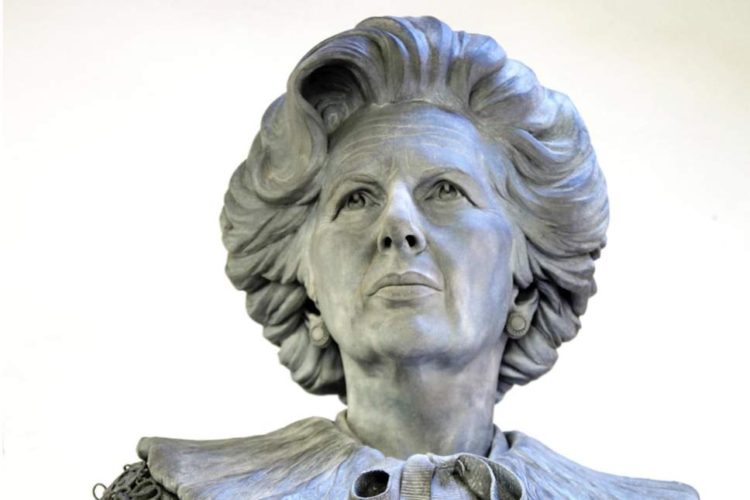By Kirsty Coleman-
Plans were approved at a hearing yesterday for the £300,000 statue of the first female Prime Minister, Margaret Thatcher, to be placed in her home town, Grantham, despite instant concerns of vandalism by politically inclined left-wing citizens. Reports have suggested there remains, in general, a far-left movement across the UK, but none of significance in Lincolnshire. After the suggestion to place it on a high plinth, the statue will stand at a combined height of over 6.4 metres tall.
Plans for the statue, created by Douglas Jennings, to be placed opposite the houses of parliament were initially rejected in January 2018, with councillors too stating it could attract vandalism. They additionally stated it did not reflect the former PM’s importance. There is already a bronze statue of Thatcher in The Houses of Parliament, out of reach of potential vandalism. Is Thatcher worthy of a second memorial?
Building a high plinth and providing lighting and CCTV, the statute will come at a cost to the country. Should it be vandalised, it will pose a further cost of repair and police time, sanctioning the guilty culprit. However, it is thought that as a result of this memorial being placed on St Peter’s Hill, there will be an increase of tourism in the area but not all Grantham citizens see this is a good outcome.
With people of The Houses of Parliament content with their already present Thatcher statue, there is the question of whether England needs another one erected, particularly when there is an evident divide in opinion. An individual truly worthy of such a memorial, would create an undeniably positive impression, leaving no qualms on this proposal. One councillor present at the hearing commented, “It is currently being held in an out of sight location. Perhaps it should stay there.”
After plans were rejected for the statue to be placed in London, there was instead a memorial created of suffragist, Millicent Fawcett, whom campaigned and famously fought for the rights of women to be educated. The country as a whole, applaud the strong women in the history of England for fighting for women’s rights, leaving no controversy or worry of vandals, conclusively, a statue representing how the county has evolved positively. Unlike the suffragist memorial, the statue of Margaret Thatcher will not wholly demonstrate a change for the better of the country, but will stand as a reminder for the irreversible divide between citizens.
CAREER
After standing as the Conservative Party Leader from 1975, Margaret Thatcher became the first female Prime Minister in May 1979 until November 1990 and during her time she made a lot of memorable changes. England was enduring an economical struggle at the time with political instability, which only helped the conservative party regain control, as the labour party were seen to be failing.
Margaret Thatcher was responsible for the further division of classes, helping the rich become richer, and the poor become poorer. Class divide is not only relevant to money matters, it is a social divide too, and it aids the separation of the people, causing individuals with indifferences, to repel each other. This further created negative feelings and actions in the country, feelings of hatred, jealousy, segregation, superiority and inferiority.
The right-winged Prime Minister was responsible for the privatisation of social housing and public transport, and the destruction of trade unions, such as the miner’s union. She sent out the message that ‘striking won’t work’, essentially trying to strip people of their voices, rights and opinions. When she first came into power, the ‘Iron Lady’, as she was nicknamed, increased interest rates to battle inflation, resulting in many of the country’s citizens losing their homes due to being under significant financial stress, leaving them unable to make huge monthly mortgage repayments.
She introduced the ‘right to buy’, scheme in 1980, selling council houses at massively reduced rates, whilst claiming she felt home-ownership was a right, and one which should be extended to council-house tenants. This gave a lot of people the break they needed and the chance to climb onto the property ladder. As a result of this, however, home ownership grew and house prices rose by 32% in 1989. In turn, this went against Thatcher’s supposed view of it being one’s right to own a home, making it harder for the younger generations to buy a home, and thus, further contributing to the division.
There are some who think Margaret improved the country and made unpopular, but necessary decisions, such as increasing inflation rates to improve the economy, privatisation, resulting in more foreign investment. Others believe she changed the country for the worst, without a care for the working class.




